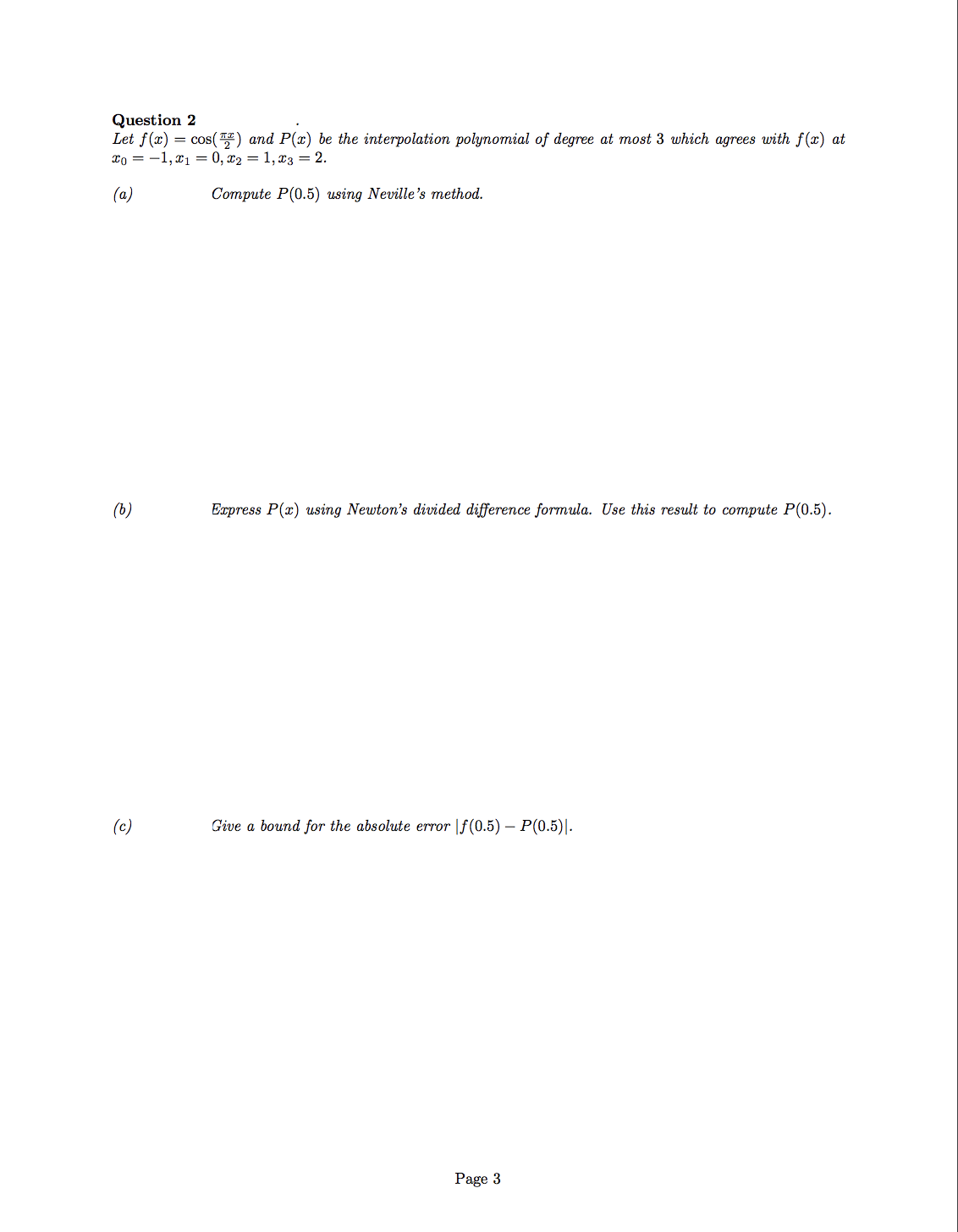Question 2 Let f(x) = cos() and P(x) be the interpolation polynomial of degree at most 3 which agrees with f(x) at To = -1, x1 = 0, x2 = 1, x3 = 2. (a) Compute P(0.5) using Neville's method.
Question 2 Let f(x) = cos() and P(x) be the interpolation polynomial of degree at most 3 which agrees with f(x) at To = -1, x1 = 0, x2 = 1, x3 = 2. (a) Compute P(0.5) using Neville's method.
Algebra & Trigonometry with Analytic Geometry
13th Edition
ISBN:9781133382119
Author:Swokowski
Publisher:Swokowski
Chapter4: Polynomial And Rational Functions
Section4.3: Zeros Of Polynomials
Problem 4E
Related questions
Question
Part B
all computations, you could give your answers to five decimal places if needed

Transcribed Image Text:Question 2
Let f(x) = cos(T) and P(x) be the interpolation polynomial of degree at most 3 which agrees with f(x) at
To = -1, x1 = 0, x2 = 1, x3 = 2.
(a)
Compute P(0.5) using Neville's method.
(b)
Express P(x) using Newton's divided difference formula. Use this result to compute P(0.5).
(c)
Give a bound for the absolute error |f(0.5) – P(0.5)|.
Page 3
Expert Solution
Step 1
Given:
xo=-1
x1=0
x2=1
x3=2
Step 2
Newton's divided difference table,
| x | f(x) | first order | second-order | third order |
| -1 | 0 | |||
| 0 | 1 | 0 | ||
| 1 | 0 | |||
| 2 | -1 |
Step by step
Solved in 4 steps

Knowledge Booster
Learn more about
Need a deep-dive on the concept behind this application? Look no further. Learn more about this topic, advanced-math and related others by exploring similar questions and additional content below.Recommended textbooks for you

Algebra & Trigonometry with Analytic Geometry
Algebra
ISBN:
9781133382119
Author:
Swokowski
Publisher:
Cengage

Algebra & Trigonometry with Analytic Geometry
Algebra
ISBN:
9781133382119
Author:
Swokowski
Publisher:
Cengage